What Once was Lost: How two duck hunters brought an once-celebrated rice back to NC
A bit of small-business math — what do you get when you put a NASCAR general manager and a farmer together, when both happen to be duck hunters?
Any number of things, really. But if you’re talking about Al Spruill and Tommy Wheeler, you get the revival of a rice variety that has been absent for over a century in North Carolina.
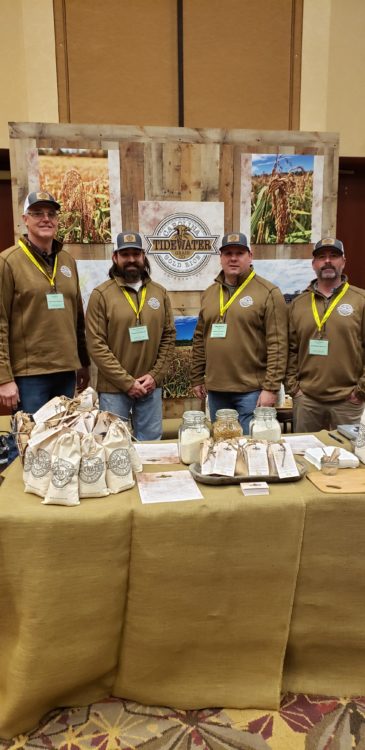
Al and Tommy have been friends for roughly fifty years. They were both born and raised in Oriental, N.C. on the Pamlico Sound. They bonded over duck hunting, fishing, and “just knocking around,” Tommy says.
Duck hunting, as it turns out, centers around agriculture. Hunters have to prepare “food plots” to create an environment that attracts ducks. Al and Tommy were no different; they spent a significant amount of time growing grain where they hunted. It slowly became a bona fide agricultural program with commercial potential, an endeavor which they formalized with the creation of the Tidewater Grain Company.
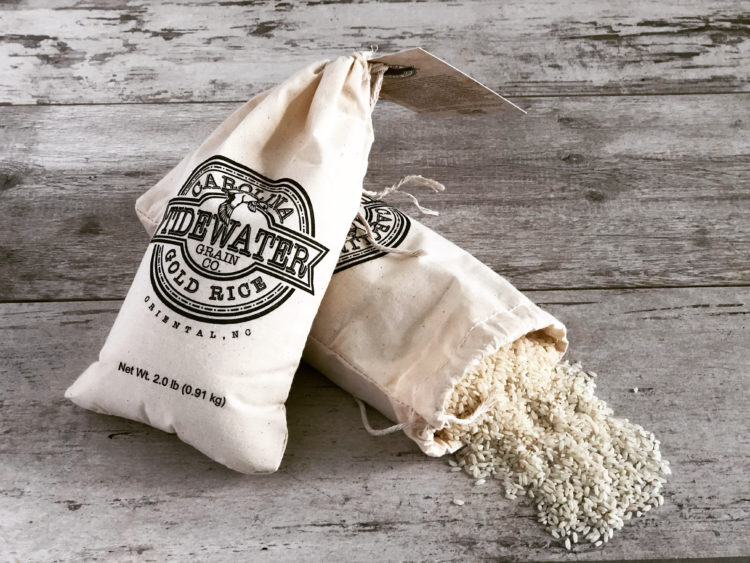
“We called it farming for ducks,” Tommy says. “And I think it’s important to understand the formative nature of how we started thinking.”
Tommy and Al decided that they wanted to build something out of their small grain operation — something that would stand the test of time. Although they both had day jobs (Al is a fifth-generation farmer and Tommy is the general manager for the NASCAR team Roush Fenway Racing) they bought the historic JC Silverthorne Lodge and other land in Whortonsville, N.C. with the intention of turning it into a hunting camp and farm.
They wanted to grow something that wasn’t a commodity crop — otherwise they would have faced intense global and regional competition, not to mention the fierce hurricanes and floods that menace the area. They had to find something different, something resilient, and something with historical ties to the region.
“Before it ever hit earth, it started with the history book,” Tommy says. “We were trying to really go through this voyage, this emotional and academic voyage, to figure out what really makes sense. And that’s what led us to rice.”
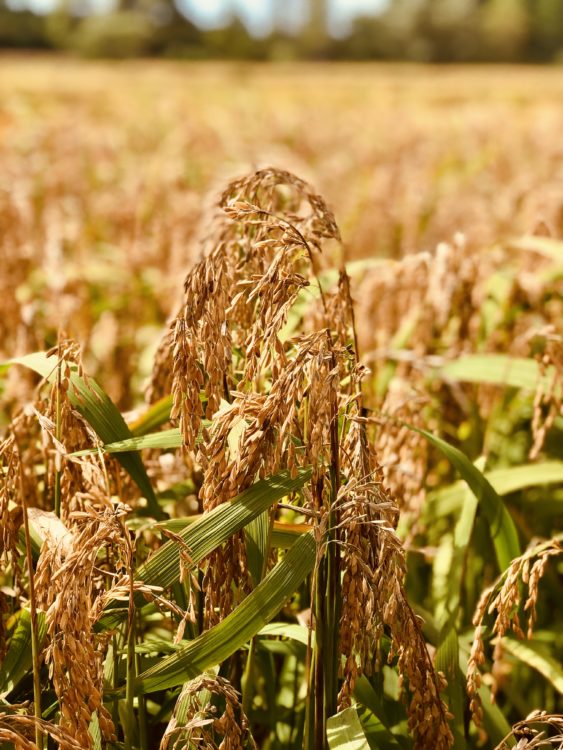
Carolina Gold rice, to be specific — an heirloom grain that defined the Southeast’s agricultural industry for centuries. Carolina Gold rice was brought to the United States from Madagascar on a ship that traded its load of rice in exchange for ship repairs in Charleston, S.C. in 1685. It flourished for over 200 years in the fertile soil of the southeastern coastal plain. But the rice had a darker side: it was often grown by slaves who labored under backbreaking conditions in the hot, malaria-ridden fields.
But then along came the drawn-out economic fallout from the Civil War, commodity agriculture, and devastating hurricanes — a perfect storm that destroyed the N.C. rice industry in just a decade. In 1900, Carolina Gold rice was one of the top exports in the Carolinas. But by 1911, the rice industry had all but collapsed in North Carolina.
That is, until the Carolina Gold Foundation brought the rice back from the ashes with a mission of restoring and preserving the heirloom grain. With access to seeds, Tommy and Al decided to bring this rice variety to their own farm. Got to Be NC Agriculture did a tremendous amount of work getting Al and Tommy’s idea off the ground.
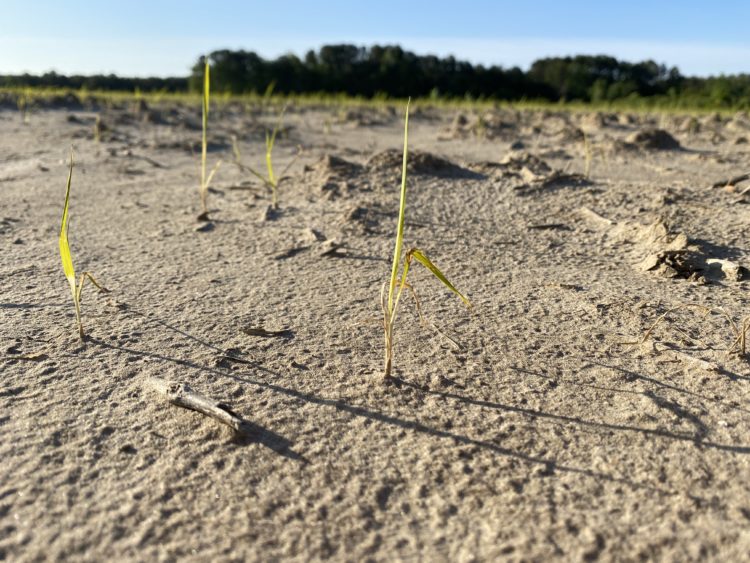
Tommy calls Carolina Gold rice the “granddaddy” of American rice. It’s resilient, adapts quickly to its environment, and was once sought after by people all over the world. (The BBC even called it “the world’s greatest rice,” and a historian called it “the chosen rice of the emperors of China.”) It has a nutty, nuanced flavor with a hint of sweetness — history you can taste. A taste that Tommy and Al are proud of.
“We tell people all the time that you’re here for a history class, and then somewhere along the line we’ll go duck hunting,” Tommy says. “Now, we have the opportunity to grow it for a very specific purpose — for brewing and distilling. It’s pretty darn exciting,” he says.
Tommy knew that both the taste and regional significance would appeal to both brewers and distillers, so he met up with Steve Steinbach, the owner of Cabarrus Brewery in Concord, N.C.
“Steve and his staff really pushed me to talk to Sebastian because of my story,” Tommy says. “Sebastian having a no-compromises approach to beer malting really paralleled our approach towards agriculture — that we are going to produce our products to the highest level we know how.”
Tommy has had beer made from his rice, although not made with Epiphany malt. We have just released malt made with Tidewater Grain Company’s historic rice, which is available now.

Al and Tommy have also just started growing Abruzzi rye — a rye from Italy that has become a part of the region’s agricultural heritage. While it is a valuable cover crop, this heirloom rye has also proven worthy of distillers, brewers and bakers alike and is popular across the Southeast. It has a rustic, earthy flavor that tastes a bit nutty — a popular base for whiskeys. Tommy and Al have a crop of Abruzzi rye destined for Epiphany growing in their fields near the Pamlico Sound this spring.
Tommy says that drinking beer made from something he grew is extremely rewarding.
“Growing something that you eat or drink just has a completely different feel to it from something that you make. I don’t know why,” Tommy says. “It’s very personal. It’s an intimate process.”
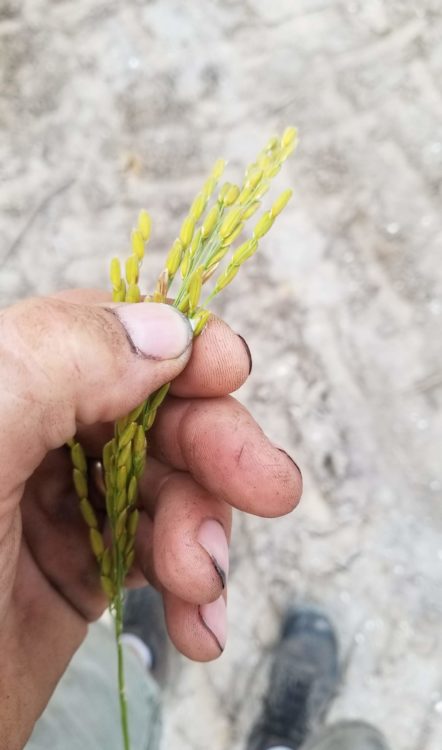
An intimate process, but one that is reviving a storied rice variety — and, in the process, making some really good beer.
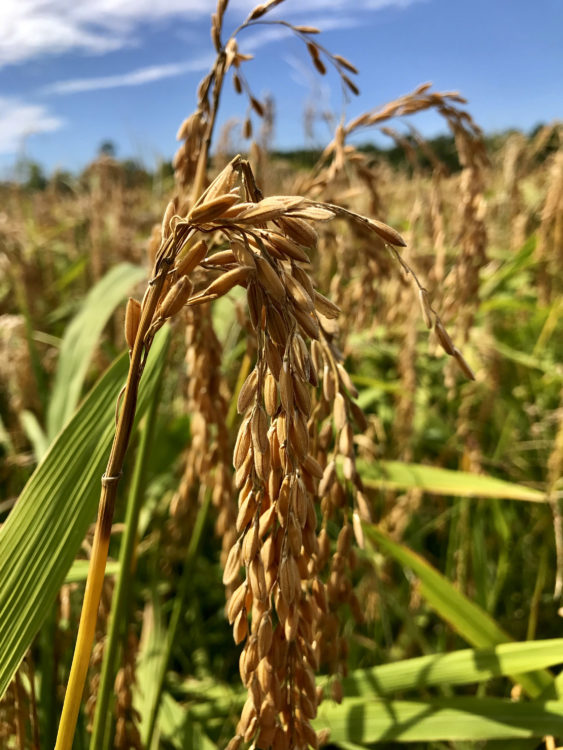

0 Comments
Leave A Comment